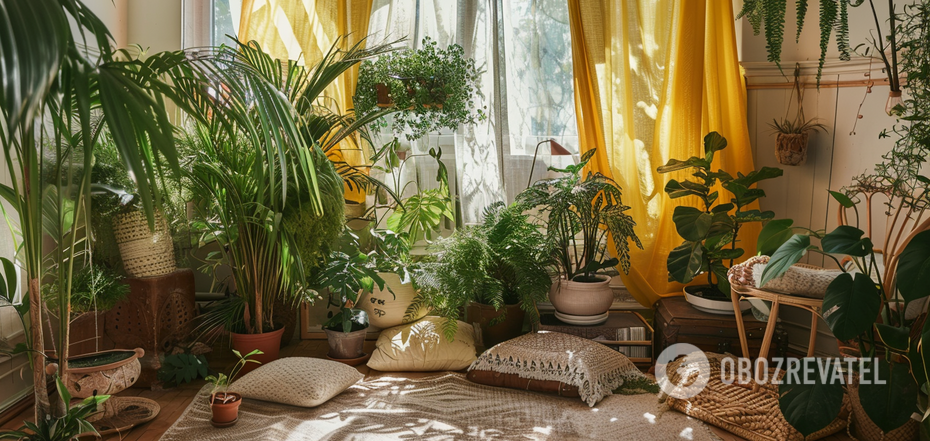Lifestyle
How to repot indoor flowers in spring: tips for beginners
Indoor plants, although not subject to the same seasonal temperature fluctuations as outdoor plants, still feel the change of seasons as well. And many of them need to be repotted in the spring, when they begin to grow intensively.
But how do you know when it's time to change the soil or move them to a new pot? And how to do it without harming the plants? OBOZ.UA found out about the expert advice.
How to understand that a plant needs to be transplanted
First of all, watch how the soil in the pot under the flower dries out. If it does so quickly, it means that the soil can no longer properly retain moisture, and it's time to change it.
Another sign is the condition of the plant's foliage. If they look droopy, have lost their elasticity, hang down and fall off easily, this is also a signal to repot.
Move off a little soil. If you see tightly twisted roots that take up almost all the space in the pot, this also indicates that it is time for the flower to move to a more spacious vessel.
How to properly transplant indoor plants
Start by choosing the right size pot. It should be only 3-5 cm larger in diameter than the previous one. This way, the plant will have additional living space, but it won't have to put too much effort into growing new roots. Also pay attention to the depth of the pot. It should have enough space for the plant's root system and a good layer of drainage.
Next, water the plant well in the old pot. Do this a day or two before repotting. It should be well moistened to minimize shock when transplanted into new soil.
Take the flower pot, tilt it slightly, and grab the plant at the base. Try to gently pull it out with the soil. But don't pull too hard so as not to tear off the leaves. If the flower doesn't give in, use a spatula to walk around the perimeter of the pot to loosen the clod and make it easier to get out.
When you get the flower out, use the spatula to gently scrape off the old soil from the roots. Do not try to clean them completely to avoid damaging them. It will be enough to remove only the main residues.
Take a new pot, put a 2-3 cm thick layer of drainage on the bottom, and then add a few spades of fresh soil. After that, place the plant itself in the vessel. Add soil a little at a time until it is firmly in place. The pot should be almost full, but leave a little space at the top for water when watering.
Finally, spill the new soil well. The soil should be well saturated with water. But do not turn it into a swamp - overwatering is also harmful. Wait a few days for the top 2-3 cm of the potting soil to dry out and then resume the usual watering schedule.
Subscribe to the OBOZ.UA channels in Telegram and Viber to keep up with the latest events.



























